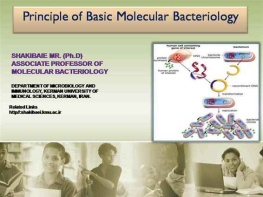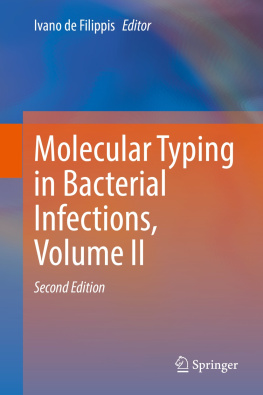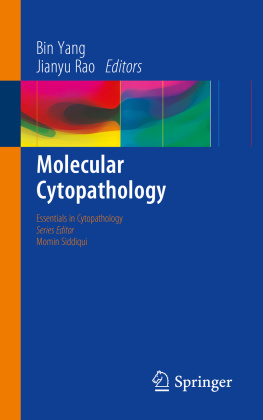isolated from burn patients in Kerman, Iran by PCR and multiplex -PCR.
3-Study on mutations in exon 5 and exon 8 of tumor suppressor gene TP53 insequamous lung cell carcinoma.
bacteria isolated from hospitals in Kerman, Iran.
5-tudy on curing activity of antibiotic resistance plasmids in
Klebsiella Identification of
pneumonieaeusing Iranian plant extracts.
Pathogenic bacteria6-Study on Antibiotic resistance, beta lactamase production and plasmid profile of
Neisseria gonorrheaestrains.
7-Study on antibiotic sensitivity of
pseudomonasaeruginosato ciprofloxacinisolated from burn patients.
8-Detection of
Legionellapneumophila in Cooling Water Systems of Hospitals and Nursing Homes of Kerman City, Iran by Semi- Nested PCR
9- Study on Myrtus extracts and its anti-super coiling DNA (Co-worker).
10- Detection of
Neisseria gonorrhoeaeby multiplex PCR (Co-worker).
11- Horizontal transfer of antibiotic resistance genes among gram negativebacteria in sewage and lake water and influence of some physicochemical parameters of water on conjugation process.
12- Study on isolation, species distribution, antibacterial resistance pattern andBeta-lactamase production of enterococci isolated from human samples in southeast of Iran.
To contact me:
Phone: +98-341-2457789
Fax: +98-341-3221671
E-mail: mr_shakibaei@kmu.ac.ir
Table of contents
Chapter 1 Page numberBacterial chromosome 1
Chapter 2Bacterial gene expression24
Chapter 3Molecular techniques in bacteriology.40
Chapter 4Genetic exchange among bacteria in the environment81
Chapter 5Quorum sensing...107
Chapter 6Bacterial signal transduction.. 142
Chapter 7Mitochondrial DNA.158
Chapter 8References.161
Bacterial Chromosomes
IntroductionIn contrast to the linear chromosomes found in eukaryotic cells,the strains of bacteria initially studied were found to havesingle, covalently closed, circular chromosomes. The circularityof the bacterial chromosome was elegantly demonstrated byelectron microscopy in both Gram negative bacteria such as
E.
coli and Gram positive bacteria such as
Bacillus subtilis.Bacterial plasmids were also shown to be circular. In fact, theexperiments were so beautiful and the evidence was soconvincing that the idea that bacterial chromosomes arecircular and eukaryotic chromosomes are linear was quicklyaccepted as a definitive distinction between prokaryotic andeukaryotic cells. However, like most other distinctions betweenprokaryotic and eukaryotic cells, it is now clear that thisdichotomy is incorrect. Not all bacteria have a single circularchromosome. Some bacteria have multiple circularchromosomes, and many bacteria have linear chromosomesand linear plasmids.
Figure1. Bacterial Chromosome
Experimental evidence for multiple chromosomes and linearchromosomes initially came from studies using pulsed field gelelectrophoresis (PFGE), an approach that uses alternatingelectric fields too separate large DNAA moleculess on an aggarosegel. SSubsequenntly genome sequencing projects have addded tothe list of bacterria with muultiple or lineear chromoosomes.







The firsst convinccing evidennce that ssome bacteria havemultiplechromossomes camme from stuudies on
Rhhodobacterr sphaeroiddes. Bothmolecullar and ggenetic sttudies cleearly demoonstratedthat
R.sphaeroides has two large circular chromosomes. One of thechromosomes is 3.0 Mb and the other is 0.9 Mb. Genes encodingrRNAs and tRNAs required for translation, and metabolic enzymesare distributed between the two chromosomes. Multiplechromosomes have also been found in many other bacteria,including
Agrobacterium tumefaciens, Rhizobium, Brucella,
Paracoccus denitrificans, Ochrobactrum anthropi, Leptospira
interrogans, Burkholderia, Vibrio cholerae, Deinococcus radiodurans,and many others from diverse groups of bacteria. Furthermore, somebacteria have linear chromosomes. Borrelia have linearchromosomes and most strains contain both linear and circularplasmids; most of the bacteria in the genus Streptomyces have linearchromosomes and plasmids and some have circular plasmids aswell. In addition, in some cases there may be a dynamic equilibriumbetween linear and circular forms of a DNA molecule. There is someevidence that linearization may be due to integration of a linearphage genome into the circular DNA molecule.Linear chromosomes and plasmids were not discovered in bacteriauntil relatively recently. The first published evidence for linearchromossomes wass in 1979, bbut becausse the techniques useed at thattime wwere limited5 and beecause thhe dogma that all bacterialchromossomes aree circular wwas so entrrenched, feew peoplebelievedthat lineear chromosomes and plasmidds occurreed in bacteeria until1989. BBy that time pulsedd field geel electrophoresis haad beendevelopped, and thhis new teechnique pprovided coonvincing eevidencethat thee chromosoome of










 Organization
Organization Kerman University of
Kerman University of 1Study of phylogenic relationship of CTXM gene among ESBL
1Study of phylogenic relationship of CTXM gene among ESBL  producing Pseudomonas aeruginosa by RFLP sequencing.
producing Pseudomonas aeruginosa by RFLP sequencing. 2-Study on detection of MBL/ESBL -lactamases in Pseudomonasaeruginosa
2-Study on detection of MBL/ESBL -lactamases in Pseudomonasaeruginosa isolated from burn patients in Kerman, Iran by PCR and multiplex -PCR.
isolated from burn patients in Kerman, Iran by PCR and multiplex -PCR.  3-Study on mutations in exon 5 and exon 8 of tumor suppressor gene TP53 insequamous lung cell carcinoma.
3-Study on mutations in exon 5 and exon 8 of tumor suppressor gene TP53 insequamous lung cell carcinoma.  4-Study on Plasmids responsible for cefotaxim & ceftizoxime in nosocomial
4-Study on Plasmids responsible for cefotaxim & ceftizoxime in nosocomial  bacteria isolated from hospitals in Kerman, Iran.
bacteria isolated from hospitals in Kerman, Iran. 
 Experimental evidence for multiple chromosomes and linearchromosomes initially came from studies using pulsed field gelelectrophoresis (PFGE), an approach that uses alternatingelectric fields too separate large DNAA moleculess on an aggarosegel. SSubsequenntly genome sequencing projects have addded tothe list of bacterria with muultiple or lineear chromoosomes.
Experimental evidence for multiple chromosomes and linearchromosomes initially came from studies using pulsed field gelelectrophoresis (PFGE), an approach that uses alternatingelectric fields too separate large DNAA moleculess on an aggarosegel. SSubsequenntly genome sequencing projects have addded tothe list of bacterria with muultiple or lineear chromoosomes.





 The firsst convinccing evidennce that ssome bacteria havemultiplechromossomes camme from stuudies on Rhhodobacterr sphaeroiddes. Bothmolecullar and ggenetic sttudies cleearly demoonstratedthat R.sphaeroides has two large circular chromosomes. One of thechromosomes is 3.0 Mb and the other is 0.9 Mb. Genes encodingrRNAs and tRNAs required for translation, and metabolic enzymesare distributed between the two chromosomes. Multiplechromosomes have also been found in many other bacteria,including Agrobacterium tumefaciens, Rhizobium, Brucella,
The firsst convinccing evidennce that ssome bacteria havemultiplechromossomes camme from stuudies on Rhhodobacterr sphaeroiddes. Bothmolecullar and ggenetic sttudies cleearly demoonstratedthat R.sphaeroides has two large circular chromosomes. One of thechromosomes is 3.0 Mb and the other is 0.9 Mb. Genes encodingrRNAs and tRNAs required for translation, and metabolic enzymesare distributed between the two chromosomes. Multiplechromosomes have also been found in many other bacteria,including Agrobacterium tumefaciens, Rhizobium, Brucella,